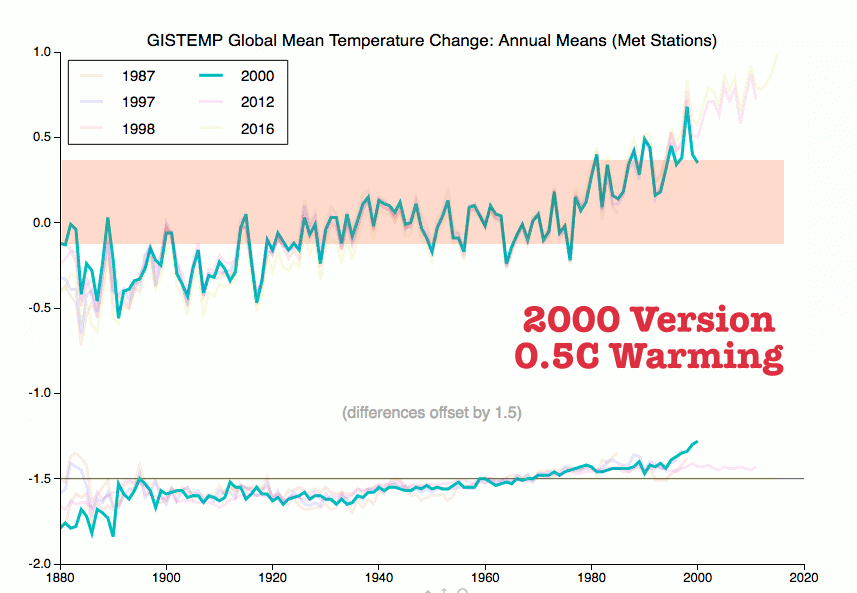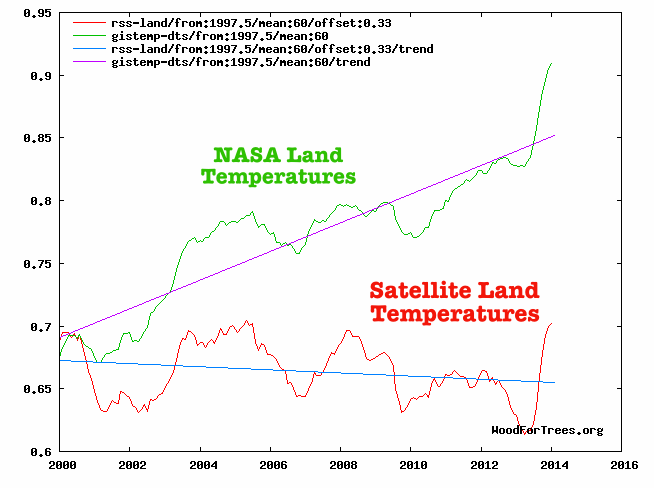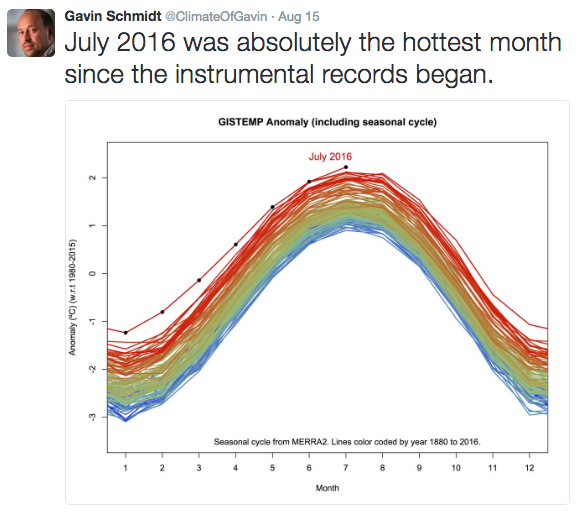NASA shows post-1880 land surface temperature trends increasing from 0.5C warming in 2000 to 1.4C warming in 2016. A massive increase caused primarily by altering the historical record. The past keeps getting cooler.
This massive increase since the year 2000 occurred during a period when satellites showed air temperatures over land decreasing.
Wood for Trees: Interactive Graphs
Gavin claims record temperatures, which are the result of data tampering – not global warming.




